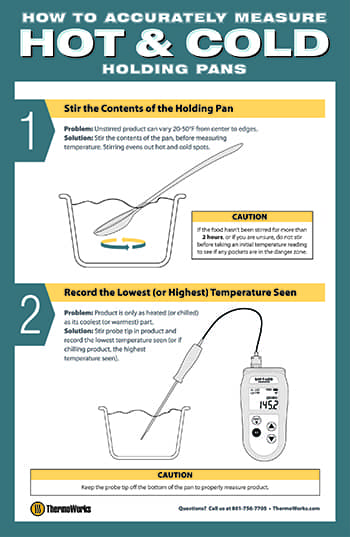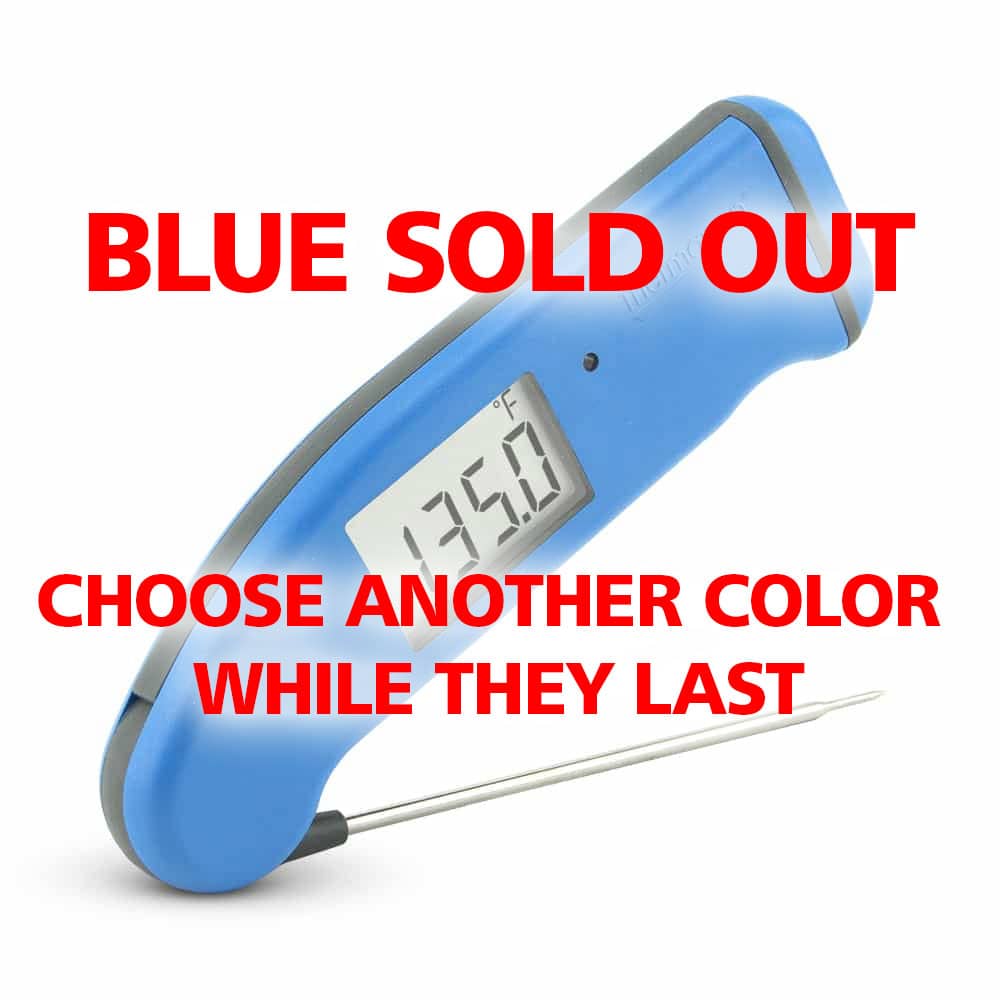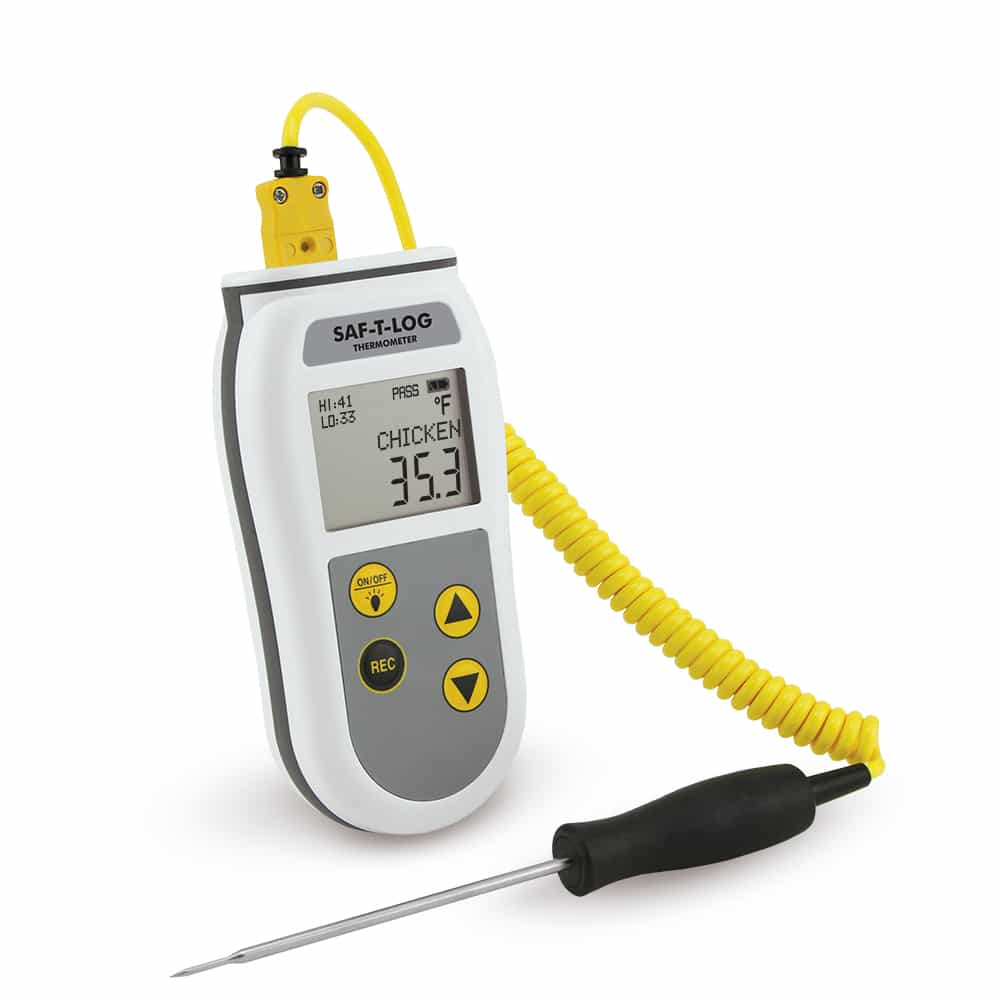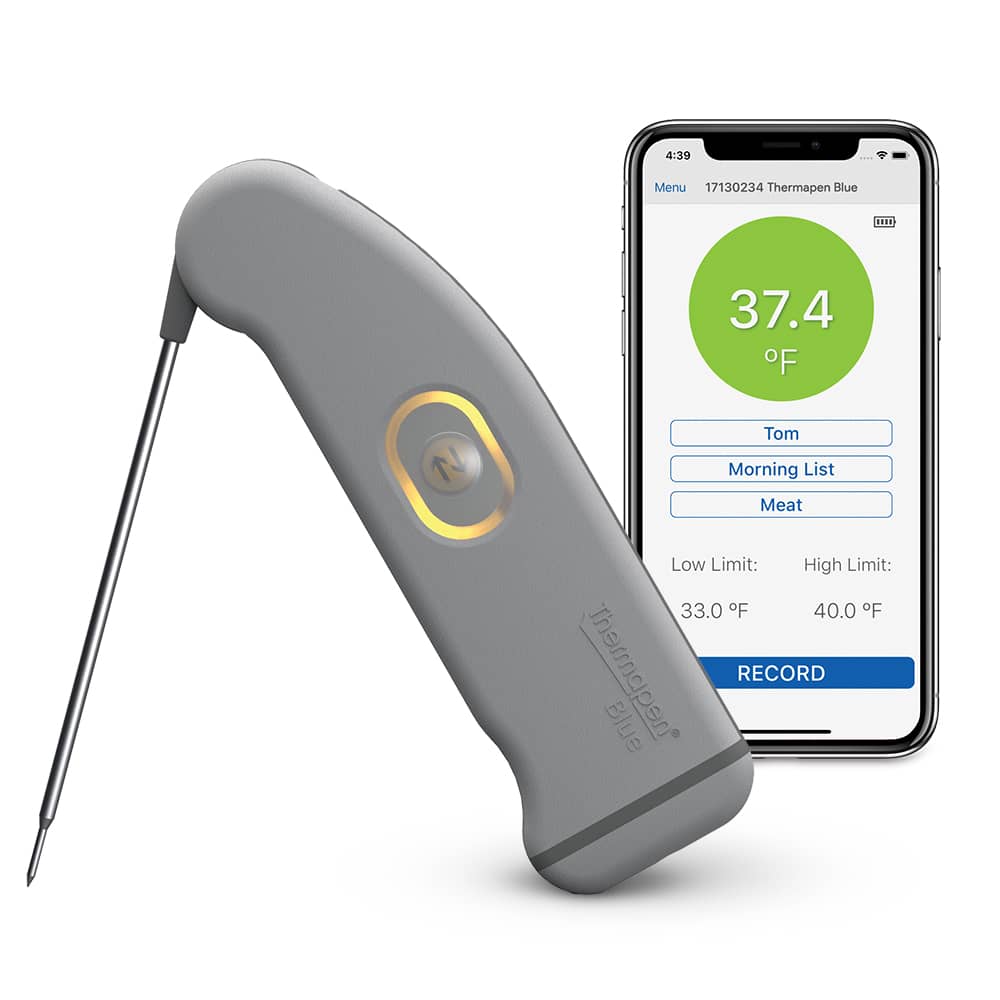How to Accurately Measure Hot and Cold Holding Pans
In our work with quick service restaurants, large chains, and independent restaurants who measure product in hot and cold holding pans, we see the same two big mistakes again and again. The good news is that both of these mistakes are easily remedied leading to more accurate temperature readings and safer food for your customers.
Mistake #1: Failing to Stir Foods Before Measuring Their Temperature
Differences in temperature within the same medium are called “gradients.” If a batch of beans was in a hot holding pan, you would see hotter bean temperatures toward the edges of the pan than in the center (also referred to as the thermal center). These are temperature gradients. Stirring evens out the gradients and brings foods, liquids, and semi-liquids to a more uniform temperature. Make a habit of stirring foods often while hot holding and while cooling. Measuring temperature in the center of the food after you stir will give you a more accurate picture of the product in the pan as a whole. Remember, when it comes to food safety, product is only as heated (or chilled) as its coolest (or warmest) part. If you are not sure when the food was last stirred, do not stir before taking an intial temperature. If any area of the food has been below 135°F for more than 2 hours or an unkown period of time, the food may not be considered safe, so be sure to stir your food at least every hour.
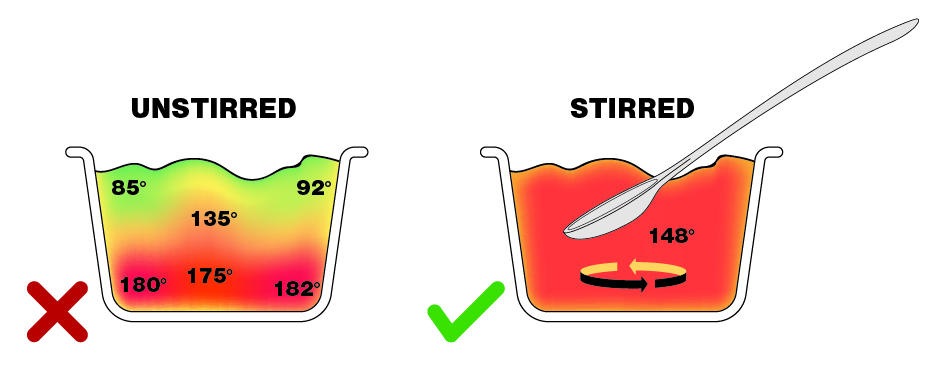
Mistake #2: Failing to Measure the Thermal Center of a Food
Because of temperature gradients, you want to be sure you’re measuring the thermal center (the center of the previously mentioned batch of beans). With a fast and accurate digital thermometer, you can quickly pull the probe tip through any cooked food looking for the lowest number on the display (or the highest number on the display if you’re measuring cold holding foods). If you’re using one of our Super-Fast® and accurate thermometers, like the Thermapen® Mk4, the probe sensor is in the very tip of the probe which is the part that needs to be in the thermal center. Another common mistake is resting the probe tip on the bottom of a pan. Resting the probe on the bottom of the pan will only show you the temperature of the pan itself. Be sure to suspend the probe tip in the food itself when taking a measurement.
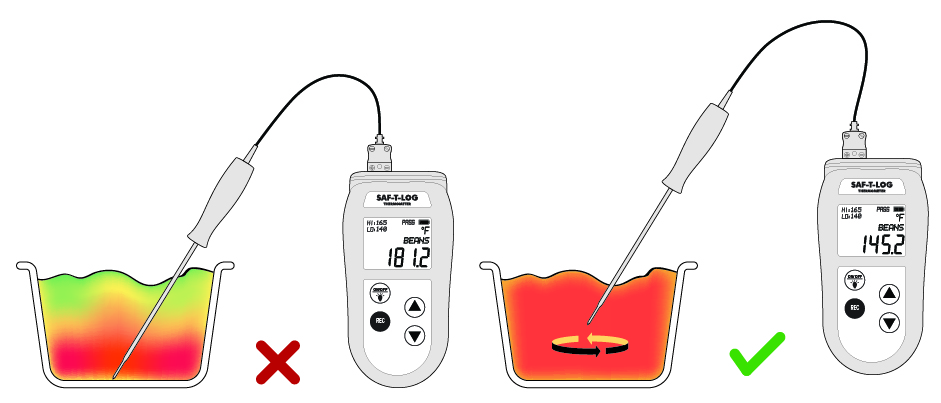
Solutions
The solutions to these two common mistakes are pretty straightforward. First, stir your holding pot of food. Second, insert the probe into the center of the food or liquid, suspending the probe tip above the bottom of the pan. Pull the probe tip up through the food looking for the lowest number. For more information on measuring a solid piece of food, like a steak or chicken tender, checkout our article on Getting an Accurate Temperature Reading.
Here’s a helpful infographic that you can download and display so your staff can get it right every time.
